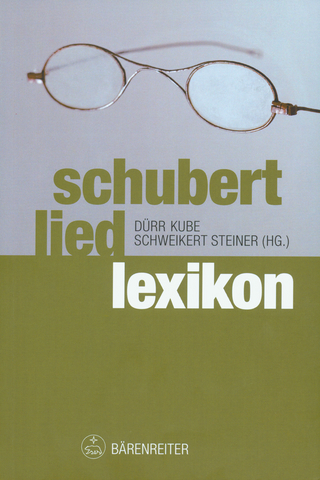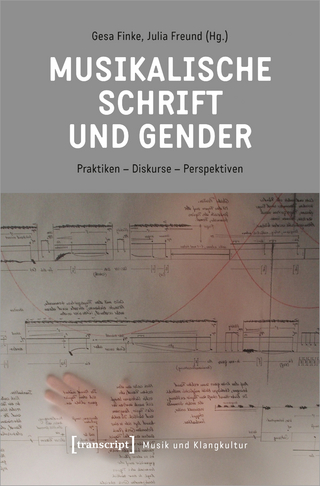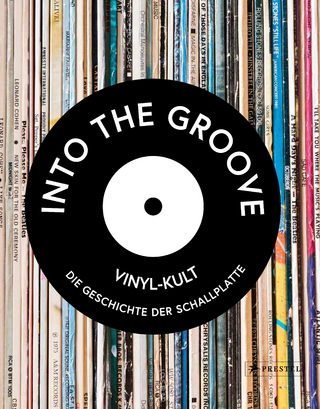
Handbook of Music and Emotion
Oxford University Press (Verlag)
978-0-19-923014-3 (ISBN)
- Titel ist leider vergriffen;
keine Neuauflage - Artikel merken
Music's ability to express and arouse emotions is a mystery that has fascinated both experts and laymen at least since ancient Greece. The predecessor to this book 'Music and Emotion' (OUP, 2001) was critically and commercially successful and stimulated much further work in this area. In the years since publication of that book, empirical research in this area has blossomed, and the successor to 'Music and Emotion' reflects the considerable activity in this area. The Handbook of Music and Emotion offers an 'up-to-date' account of this vibrant domain. It provides comprehensive coverage of the many approaches that may be said to define the field of music and emotion, in all its breadth and depth. The first section offers multi-disciplinary perspectives on musical emotions from philosophy, musicology, psychology, neurobiology, anthropology, and sociology. The second section features methodologically-oriented chapters on the measurement of emotions via different channels (e.g., self report, psychophysiology, neuroimaging). Sections three and four address how emotion enters into different aspects of musical behavior, both the making of music and its consumption.
Section five covers developmental, personality, and social factors. Section six describes the most important applications involving the relationship between music and emotion. In a final commentary, the editors comment on the history of the field, summarize the current state of affairs, as well as propose future directions for the field. The only book of its kind, The Handbook of Music and Emotion will fascinate music psychologists, musicologists, music educators, philosophers, and others with an interest in music and emotion (e.g., in marketing, health, engineering, film, and the game industry). It will be a valuable resource for established researchers in the field, a developmental aid for early-career researchers and postgraduate research students, and a compendium to assist students at various levels. In addition, as with its predecessor, it will also attract interest from practising musicians and lay readers fascinated by music and emotion.
Patrik N. Juslin is associate professor of Psychology at Uppsala University, Sweden, where he teaches courses on music, emotion, perception, and research methodology. He completed his PhD in 1998 and became associate professor in 2004. Juslin has published numerous articles in the areas of expression in music performance, emotional responses to music, music education, and emotion in speech. In 2001, he edited the volume Music and Emotion: Theory and Research together with John Sloboda. Juslin is associate editor of the journals Music Perception and Musicae Scientiae. He is a member of the International Society for Research on Emotions and received ESCOM's 'Young Researcher Award' in 1996. Alongside his work as a researcher, he has also worked professionally as a guitar player. John Sloboda is Emeritus Professor at Keele, and honorary Professor of Music at Royal Holloway University, London. He has been a member of the School of Psychology at Keele since 1974 and was Director of its Unit for the Study of Musical Skill and Development founded in 1991. Sloboda is internationally known for his work on the psychology of music. He is a Fellow of the British Psychological Society, and has been President of both the Psychology and General Sections of the British Association for the Advancement of Science, as well as President of the European Society for the Cognitive Sciences of Music, where he serves on the editorial board of it's journal Musicae Scientiae. He was recipient of the 1998 British Psychological Society's Presidents Award for Distinguished Contributions to Psychological Knowledge, and in 2004 was elected to Fellowship of the British Academy. He is author of over 150 publications in the field of music psychology.
PART I: OVERTURE; 1. Introduction: Aims, organization, and terminology; PART II: MULTIDISCIPLINARY PERSPECTIVES; 2. Emotions expressed and aroused by music: Philosophical perspectives; 3. Emotion in culture and history: Perspectives from musicology; 4. At the interface between the inner and outer world: Psychological perspectives; 5. Towards a neurobiology of musical emotions; 6. Exploring the habitus of listening: Anthropological perspectives; 7. Emotion as social emergence: Perspectives from music sociology; PART III: MEASUREMENT; 8. Self-report measures and models; 9. Continuous self-report methods; 10. Indirect perceptual, cognitive, and behavioural measures; 11. Psychophysiological measures; 12. Functional neuroimaging; PART IV: MUSIC MAKING; 13. Emotion and composition in classical music: Historiometric perspectives; 14. The role of structure in the musical expression of emotions; 15. Emotion and motivation in the lives of performers; 16. The role of negative emotions in performance anxiety; 17. Expression and communication of emotion in music performance; PART V: MUSIC LISTENING; 18. Music in everyday life: The role of emotions; 19. Experimental aesthetics and liking for music; 20. Strong experiences with music; 21. Musical expectancy and thrills; 22. How does music evoke emotions? Exploring the underlying mechanisms; PART VI: DEVELOPMENT, PERSONALITY AND SOCIAL FACTORS; 23. Perspectives on music and affect in the early years; 24. Preference, personality, and emotion; 25. The influence of affect on music choice; 26. Politics, mediation, social context, and public use; 27. Cross-cultural similarities and differences; PART VII: APPLICATIONS; 28. Music education: the role of affect; 29. Music therapy; 30. Music, health, and well-being; 31. Music as a source of emotion in film; 32. Music and marketing; PART VIII: ENCORE; 33. The past, present, and future of music and emotion research
| Erscheint lt. Verlag | 10.12.2009 |
|---|---|
| Reihe/Serie | Series in Affective Science |
| Zusatzinfo | 30 black-and-white line drawings, 8 page plate section |
| Verlagsort | Oxford |
| Sprache | englisch |
| Maße | 179 x 253 mm |
| Gewicht | 1608 g |
| Themenwelt | Kunst / Musik / Theater ► Musik ► Allgemeines / Lexika |
| Kunst / Musik / Theater ► Musik ► Musiktheorie / Musiklehre | |
| Geisteswissenschaften ► Psychologie | |
| ISBN-10 | 0-19-923014-5 / 0199230145 |
| ISBN-13 | 978-0-19-923014-3 / 9780199230143 |
| Zustand | Neuware |
| Haben Sie eine Frage zum Produkt? |
aus dem Bereich


